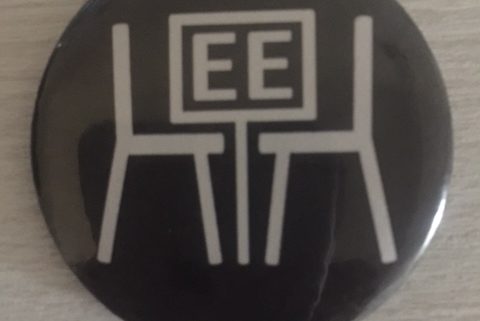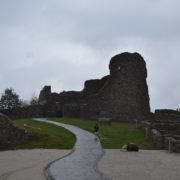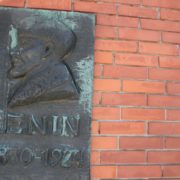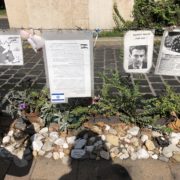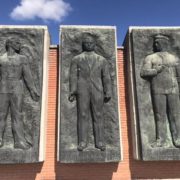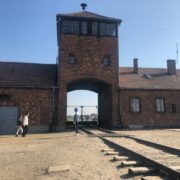Remembering the Holocaust in Budapest
By Bryan Alicea
Between 1941 and 1945, one of the most horrific events in human history took place. Known as the Holocaust, or “Shoah,” it claimed the lives of millions across Europe. Although the exact figures of the death toll are unknown, it is approximated that about 12 million people[1] were killed by the Nazi German regime and their accomplices. Out of the 12 million victims, roughly half were Jews living in Europe. The Holocaust is one of the darkest stains in human history and has shaped the political and social evolution of the Western world. In Europe, there are several monuments erected in memory of the Holocaust and the victims of Nazi Germany’s prejudicial beliefs. There are also museums that were opened to give the public a more in depth and greater understanding of the severity of the Holocaust. During my stay in Budapest, I had the opportunity to learn more about the Hungarian Jews who were persecuted by the Nazis and the Arrow Cross, Hungary’s Nazi-affiliated political party. I saw some of the monuments that are meant to serve as memorials of Nazi Germany’s atrocities and visited a Holocaust museum in the old Jewish district, named The Holocaust Memorial Center.
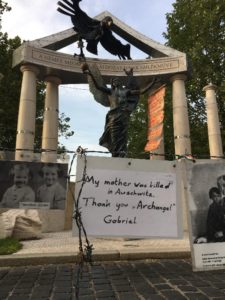 As soon as I walked inside the museum, the first thing I noticed was the glass memorial wall inscribed with the names of thousands of victims of the Holocaust in Hungary. When we talk about the massive death toll of the Holocaust, it is easy for us to get lost in the numbers and overlook the fact that each of these people were individuals and deserve to be remembered as such. Seeing their names on the memorial, however, gives us a distinct perspective, because it facilitates our understanding of their lives. We no longer think of them as an abstract number, but rather as human beings with unique names and unique lives. The rest of the museum consists of exhibitions that recount the Holocaust through use of film, computer screens, newspapers, photographs, music, and objects.
As soon as I walked inside the museum, the first thing I noticed was the glass memorial wall inscribed with the names of thousands of victims of the Holocaust in Hungary. When we talk about the massive death toll of the Holocaust, it is easy for us to get lost in the numbers and overlook the fact that each of these people were individuals and deserve to be remembered as such. Seeing their names on the memorial, however, gives us a distinct perspective, because it facilitates our understanding of their lives. We no longer think of them as an abstract number, but rather as human beings with unique names and unique lives. The rest of the museum consists of exhibitions that recount the Holocaust through use of film, computer screens, newspapers, photographs, music, and objects.
While walking along the banks of the Danube river, our tour guide pointed out the ‘Shoes on the Danube.’ The monument is an amalgamation of sixty pairs of shoes laid along the edge of the river. The memorial was dedicated to the approximately 3,500 people, many who were children, who were murdered by members of the Arrow Cross for reasons related to ethnicity and religion. The victims were told to take their shoes off before they were shot at the edge of the river so that their bodies fell into the river and were carried away. Learning about this terrible event moved me emotionally, but what I found most horrifying was the small pairs of shoes that clearly belonged to children. Seeing those shoes reminded me that not even young children were given a chance to live a peaceful life. They were denied the right to live for reasons solely related to their ethnic or religious background and were not spared from a dreadful fate.
Memory of the Holocaust in Budapest, however, is complex and carries disagreements. In 2014, a monument dubbed “the Memorial to the Victims of the German Occupation” was erected near the city center. The memorial contributes to the current political tension in Budapest and it is a source of controversy in Hungary, as many Hungarians consider the monument to be a falsification of their history. Opponents of the memorial claim that it essentially absolves Hungarians of any guilt for the Holocaust and lays all the blame on the German ‘occupiers,’ even though the two nations were allied until 1944 and many Hungarians were compliant with the Nazis demands relating to the Holocaust.
In front of the monument, there is a living memorial that commemorates the legacy of the victims of the Holocaust. Descendants of the victims put pictures and lay flowers as a way of honoring their ancestors. We participated in a circle that acts as part of the living memorial combating the misrepresentation of history that the recently constructed memorial portrays. We were each given a pin that servers as a symbol of their resistance. One of the Hungarian speakers mentioned that it is hard for many Hungarians to admit that their fathers and grandfathers were partly responsible for the Hungarian Holocaust, but that nevertheless it is something that Hungarians had to accept as part of their history. It was interesting to listen to Hungarian natives who were so keen on ensuring that the history of their country was depicted accurately. To them, it is important to come to terms with the reality of the Hungarian Holocaust and admit the guilt of their forefathers rather than just sweeping it under the rug and claim that they were not responsible.
[1] https://www.ushmm.org/wlc/en/article.php?ModuleId=10008193

